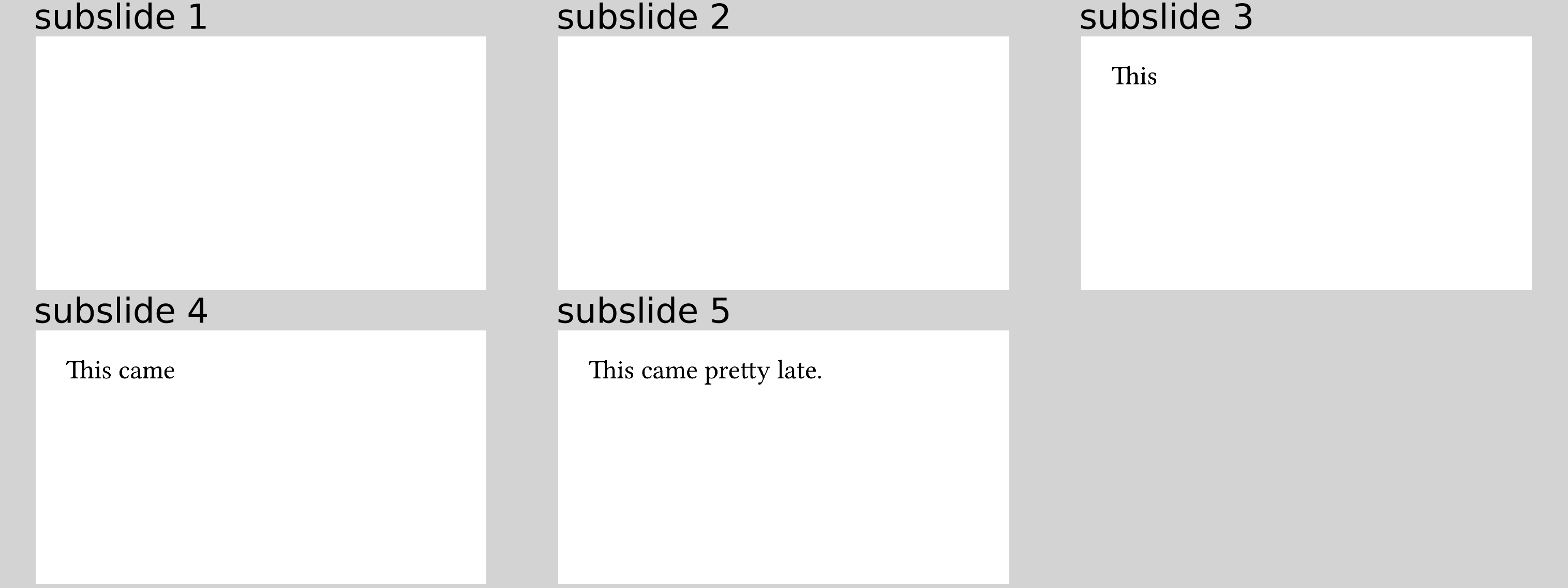More sophisticated piecewise revealing
#one-by-one
#pause may be considered syntactically a bit cumbersome as it employs a
show-rule.
If you prefer to signal the grouping of content appearing together by using
a single function call, you can use #one-by-one:
#one-by-one[Do you know ][$pi$ ][to a thousand decimal places?]
resulting in

If we still want to uncover certain elements one after the other but starting
on a later subslide, we can use the optional start argument of #one-by-one:
#one-by-one(start: 3)[This ][came ][pretty late.]
resulting in

This optional start argument exists for all functions displayed on this page.
#item-by-item
#one-by-one is especially useful for arbitrary contents that you want to display
in that manner.
Sometimes, it produces a bit too much syntactical noise with all the brackets
between content, though.
That is especially true for lists, enums, and term lists.
Instead of
#one-by-one[
- first
][
- second
][
- third
]
you can also write
#item-by-item[
- first
- second
- third
]
resulting in

A more complex example involving enums and term lists:
#show: columns.with(3)
#set list(marker: sym.arrow)
#item-by-item[
- first
- second
- some
- detail
- third
]
#colbreak()
#item-by-item[
+ also
+ works
+ with `enums`
]
#colbreak()
#item-by-item(start: 2)[
/ and: with
/ terms: too
]

Note that the list markers and enum numbers are not hidden. You can truly consider this a bug or a feature...